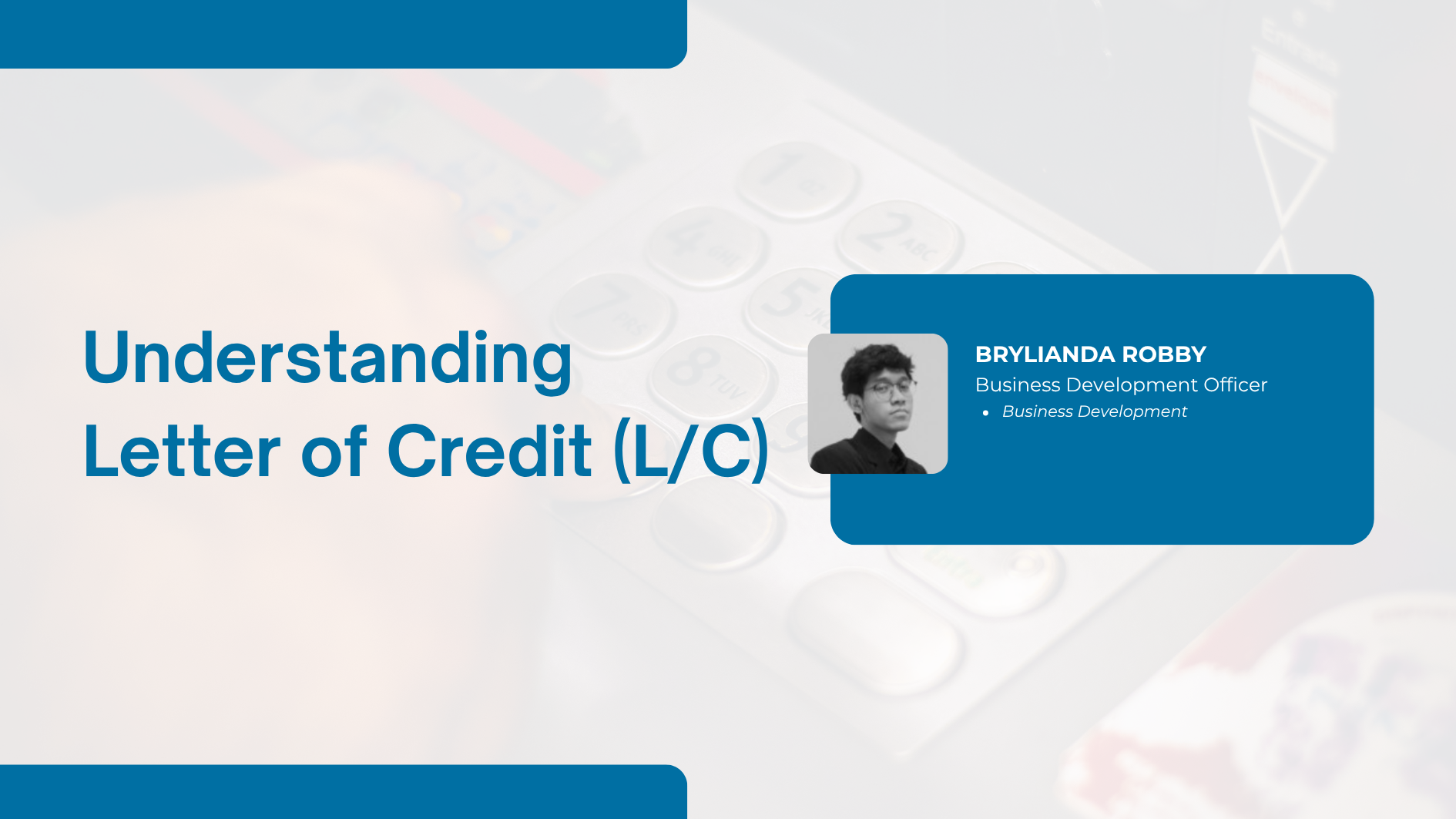Letter of Credit (L/C) is governed by the Uniform Customs and Practice for Documentary Credits (UCP), International Chamber of Commerce (ICC) Publication No. 600. It represents a commitment from the issuing bank to make payment, or to authorize another bank to make payment, to the beneficiary upon the presentation of documents (e.g., bill of lading, invoice, insurance certificate) that comply with the stated terms and conditions.
According to Minister of Trade Regulation No. 94 of 2018, a Letter of Credit refers to a credit or credit notification issued by a foreign exchange bank (the opening/issuing bank) at the request of an importer who is its customer, and addressed to an exporter as the beneficiary through its correspondent bank (the advising bank) abroad.
In this context, UCP 600 serves as the regulatory framework, while Minister of Trade Regulation No. 94 of 2018 acts as the implementing regulation for UCP 600 within Indonesia.
Principles of a Letter of Credit (L/C):
- Principle of Independence
This is the core principle of an L/C transaction. Legally, a Letter of Credit must be treated as an independent undertaking, separate from the underlying sales or service contract. This principle reflects the L/C’s nature as a distinct international financial instrument. - Principle of Documentary Compliance
A Letter of Credit operates strictly based on the documents presented. It is not contingent upon the actual shipment of goods, provision of services, or other performance. The issuing bank is obligated to make payment solely upon the presentation of documents that fully comply with the L/C terms.
Functions of a Letter of Credit (L/C):
- Ensures secure payment and delivery in accordance with the terms agreed upon between the exporter and importer, providing assurance to both parties involved in the transaction.
- Offers credit facilities to both exporters and importers. A Letter of Credit can be paid immediately (at sight) or with a deferred payment term, allowing flexibility in financing and cash flow management.
- Serves as a payment guarantee for contractors with specific benefits. In this function, the issuing bank, at the request of the contractor, borrower, or applicant, guarantees payment to the beneficiary in the event of non-performance or failure to fulfill contractual obligations.
Provisions of a Letter of Credit (L/C):
In the case of a Letter of Credit (L/C), payment for the export of certain designated goods must be conducted using the L/C method, and the proceeds are required to be received through a domestic foreign exchange bank.
In addition to domestic foreign exchange banks, payments may also be received through government-established export financing institutions, in accordance with Bank Indonesia regulations concerning foreign exchange derived from exports.
For the export of designated goods, the exporter is obligated to specify the L/C as the payment method in the export declaration and must submit a signed and stamped declaration letter to the appointed surveyor.
Types of Letters of Credit (L/C):
- Revocable L/C This type of L/C can be cancelled or amended at any time by the importer or issuing bank without prior consent or notification to the exporter.
- Irrevocable L/C This L/C cannot be amended or cancelled unilaterally by the importer or issuing bank without the agreement of all parties involved.
- Irrevocable and Confirmed L/C Payment under this L/C is guaranteed by both the issuing bank and the confirming bank (correspondent bank), providing additional security for the exporter.
- Open L/C Funds under the L/C can be drawn through any bank, offering flexibility in the choice of negotiating bank.
- Restricted L/C Funds can only be drawn through a specific bank designated by the issuing bank.
- Documentary L/C Disbursement of funds requires the presentation of shipping and other specified documents in accordance with the terms of the L/C.
- Revolving L/C Allows the credit to be used repeatedly for a certain period or within a specified limit, without the need to issue a new L/C each time.
- Back-to-Back L/C A secondary L/C that can be issued by the original beneficiary (first exporter) to a second exporter using the original L/C as collateral. This is commonly used in intermediary trading.
- Transferable L/C Allows the original beneficiary (usually an intermediary) to transfer part or all of the credit to one or more third parties, while retaining their rights as the main beneficiary.
- Standby L/C Functions similarly to a bank guarantee. It is issued by a foreign trading partner’s bank to secure a loan or obligation undertaken by a local company. Payment is only made if the primary payment method fails.
*Disclaimer: This article is for general information only and does not constitute legal advice. We accept no liability for any consequences arising from its use. Unauthorized use or reproduction is prohibited and may result in legal action.
______
Source:
UCP 600
Permendag No. 94 tahun 2018
Paper.id





